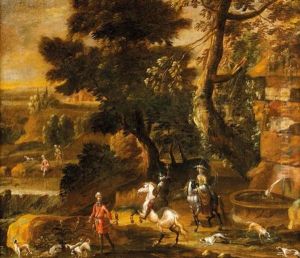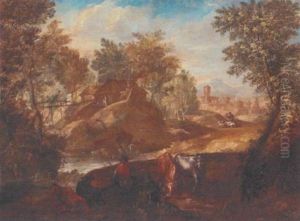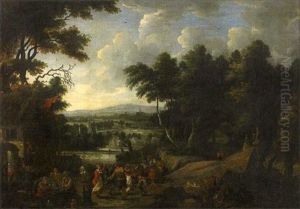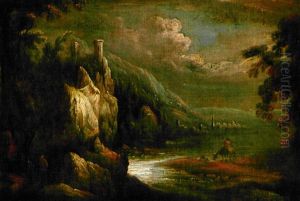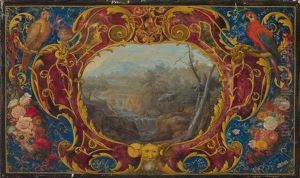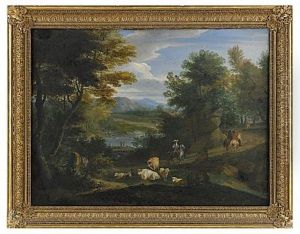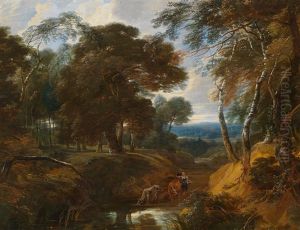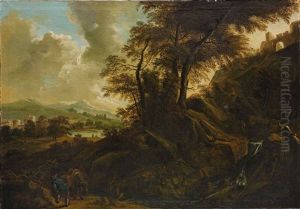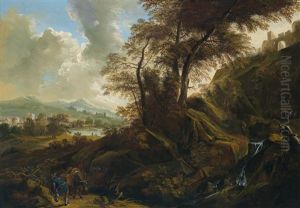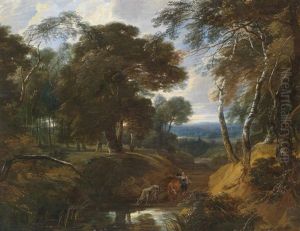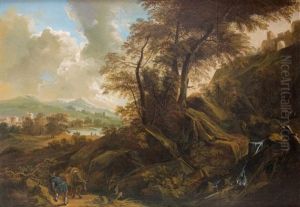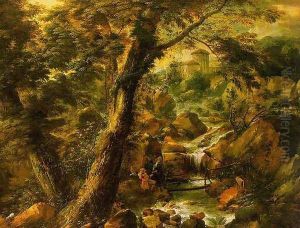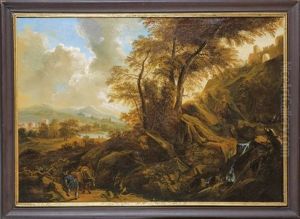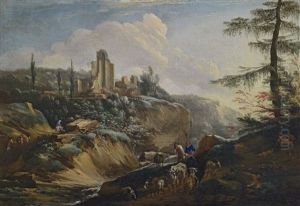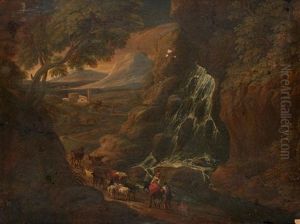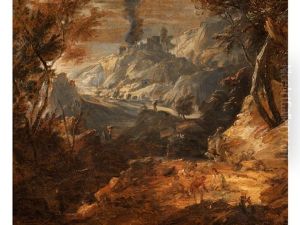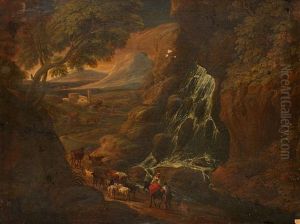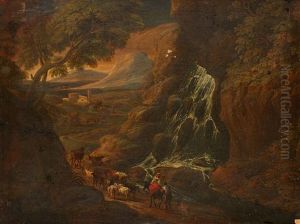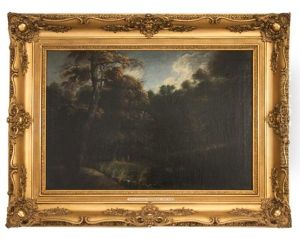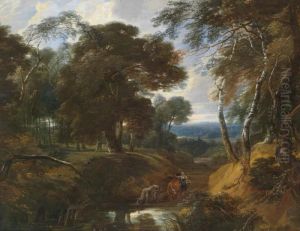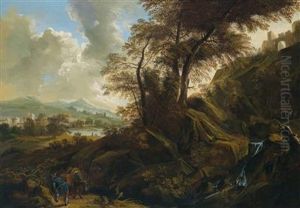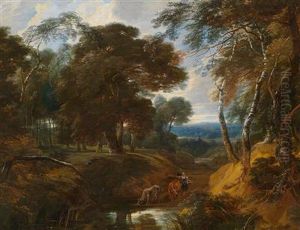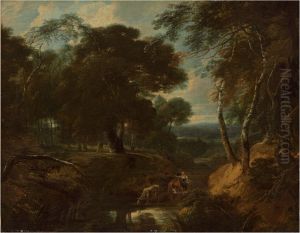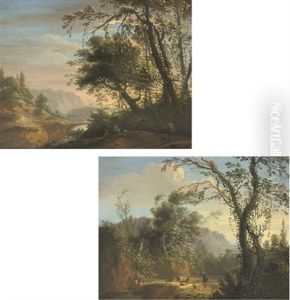Philippe-Augustin Immenraet Paintings
Philippe-Augustin Immenraet was a Flemish painter of the Baroque period, known for his landscape and genre paintings. Born in 1627 in Antwerp, which was then part of the Spanish Netherlands, Immenraet came of age in a city that was a major center for art and commerce. His birthplace played a significant role in his artistic development, as Antwerp had a rich tradition of artistic innovation and was home to many prominent artists of the time, including Peter Paul Rubens.
Trained in the robust artistic climate of Antwerp, Immenraet developed a keen eye for landscape painting, a genre that was increasingly popular during the 17th century. His works often depicted natural scenes infused with a sense of calm and serenity, reflecting the influence of his predecessors in the Flemish landscape tradition. Immenraet's approach to landscape painting was characterized by a meticulous attention to detail and a harmonious use of color, which helped to convey the lushness and variety of the natural world.
Although not as widely known as some of his contemporaries, Immenraet made a modest contribution to the Flemish art scene. His paintings were appreciated for their craftsmanship and for the artist's ability to capture the essence of rural life and the beauty of the countryside. He also painted genre scenes, which depicted everyday life and activities, imbuing his works with a sense of narrative and character.
Immenraet's career unfolded during a period of great social and political change in Europe, and like many artists of his time, he had to navigate the complexities of patronage and the art market. Despite the challenges, he managed to sustain a career as a painter, contributing to the rich tapestry of Baroque art in the Southern Netherlands.
Philippe-Augustin Immenraet passed away in 1679. While he may not have achieved the fame of some of his peers, his work remains a testament to the enduring appeal of Flemish landscape and genre painting. Today, his paintings can be found in private collections and occasionally appear in art auctions, offering a glimpse into the world of 17th-century Flanders and the artistic legacy of its painters.
